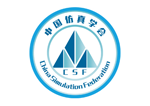Journal of System Simulation
Abstract
Abstract: For a twin-stage variable-pitch axial fan, a novel blade tip treatment carving a chute from the pressure side to suction side is proposed, and fan performance under different blade tip treatments is simulated to determine the excellent treatment. The effects of blade tip grooving in a single stage or both stages on fan performance and internal dynamics are examined. Numerical results show that both blade tip treatments can improve the fan performance; the overall promotion of fan performance illustrates that the best scheme is the blade tip grooving in the first stage followed by the blade tip grooving in both stages and in the second stage, respectively. Although the tip grooving in both stages enhances the full pressure rise most effectively, the domain of high efficiency is shrunk. After blade tip grooving, the static pressure reduces notably in the suction side and the tip leakage loss declines distinctly. Considering the requirements of varying-load operation, the blade tip grooving in the first stage is a preferred scheme.
Recommended Citation
Ye, Xuemin; Zhang, Jiankun; and Li, Chunxi
(2019)
"Simulation of Blade Tip Grooving Effect on Performance of Twin-stage Variable-pitch Axial Fan,"
Journal of System Simulation: Vol. 30:
Iss.
4, Article 37.
DOI: 10.16182/j.issn1004731x.joss.201804037
Available at:
https://dc-china-simulation.researchcommons.org/journal/vol30/iss4/37
First Page
1511
Revised Date
2016-07-04
DOI Link
https://doi.org/10.16182/j.issn1004731x.joss.201804037
Last Page
1519
CLC
TH4;O355
Recommended Citation
Ye Xuemin, Zhang Jiankun, Li Chunxi. Simulation of Blade Tip Grooving Effect on Performance of Twin-stage Variable-pitch Axial Fan[J]. Journal of System Simulation, 2018, 30(4): 1511-1519.
DOI
10.16182/j.issn1004731x.joss.201804037
Included in
Artificial Intelligence and Robotics Commons, Computer Engineering Commons, Numerical Analysis and Scientific Computing Commons, Operations Research, Systems Engineering and Industrial Engineering Commons, Systems Science Commons

